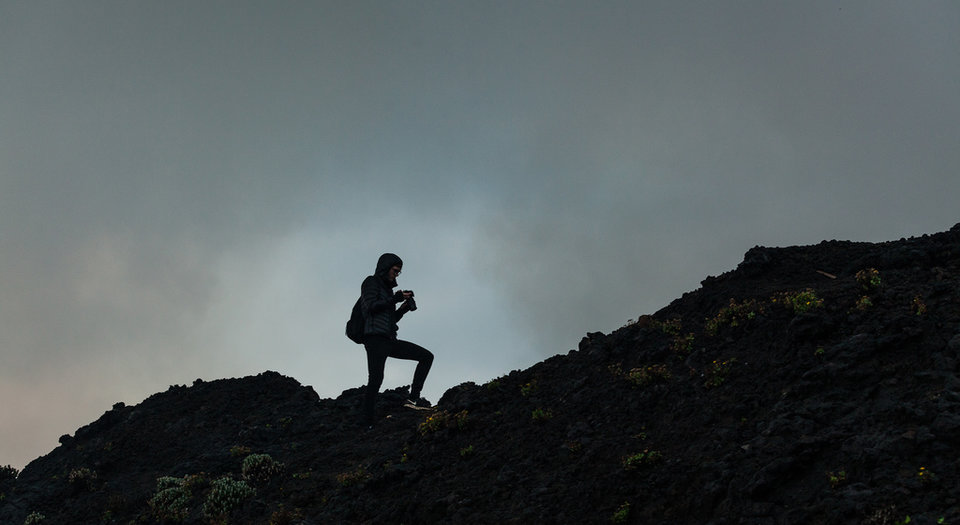
Artisanal mining
The future of artisanal mining in the DRC
The Democratic Republic of Congo is the world’s leading source of mined cobalt. However, rather than benefitting Congolese society, the mineral has led to vast human, social, and environmental costs. Zachary Skidmore investigates the future of the sector.
F
or countries to achieve their net-zero goals, societies must fully embrace the electrification of existing and future infrastructure. The mineral cobalt is a crucial part of this transition. As the global demand for lithium-ion batteries soars, so has the price and demand for cobalt.
However, the Democratic Republic of Congo’s (DRC) cobalt industry is saddled with vast human, social, and environmental costs. With a GDP per capita of $556.81 in 2020 (according to the World Bank), the country is far from benefitting from this essential mineral. Many Congolese ply their trade as artisanal or small-scale miners (ASM), with children as young as three taught to pick out the purest ore from rock slabs.
Since 2019, the government has begun to make a more concerted effort to clean up the trade. This culminated in the creation of the Enterprise Générale du Cobalt (EGC), set up to ensure a responsible sourcing standard, regulate ASM mining, and buy ASM-produced cobalt. In a recent announcement, the ESC stated that they would become the sole purchaser of ASM mined cobalt to provide precise regulation to the market.
Cobalt and the DRC
The DRC is the world’s leading source of mined cobalt. In 2020, the worldwide mine production of cobalt amounted to 140,000 metric tons. The DRC accounted for nearly two-thirds of that amount.
Rather than benefitting Congolese society, the cobalt reserves have led to significant social strife and corruption. Relentless conflict, especially within the eastern Congo, has prevented the development of any large-scale industrial mining projects. This has led to most mining being done by ASMs, with very little to no governmental oversight or health and safety standards.
The discovery of vast mineral deposits has therefore led the DRC to suffer from a phenomenon known as the Dutch disease, a paradox that occurs when the discovery of considerable mineral resources harms the country’s broader economy and society.
Artisanal mining
The DRC’s infrastructure has been desolated by years of kleptocracy, civil war, and ethnic violence, leading to very little industry for employment. This has led more than 85% to find work within the informal sector.
The lack of viable employment opportunities has fuelled the market for ASMs, informal miners who scavenge a share of the riches, using bespoke and dangerous methods. There are about 150,000-200,000 artisanal miners currently working cobalt deposits in Congo, with more than a million others directly economically dependent on their activity.
These miners are at significant risk of death or severe injury, with little oversight from governmental or mining officials. The deaths of the 43 miners on 27 June at Glencore’s mine in Kolwezi exposed these risks. While there is no record on the number of deaths attributed to cobalt mining in the DRC, according to research by Siddharth Kara, as many as 2,000 illegal miners are dying a year.
According to research by Siddharth Kara, as many as 2,000 illegal miners are dying a year.
Much of this illegally mined cobalt leaks into the global supply chain via refineries in China, ending up in batteries, cars, and smartphones sold in the west. In 2018, 30% of DRC cobalt came from artisanal miners forming a sizable market share.
This poses a significant issue for the electric vehicle (EV) market as emotionally, an EV is supposed to be a good deed. The last thing you want to hear is that the car is not clean. EV suppliers have attempted to combat this by launching pilot schemes to ensure that the cobalt is mined ethically.
Tesla and Re|Source, for example, have launched a pilot in the DRC to trace cobalt from mine to EVs. Several other key market actors have also been involved in similar initiatives to improve working conditions of cobalt miners.

// Mushenge, Kasai Central/Democratic Republic of Congo- December the 4th 2014: A close up of a machete in the Democratic Republic of Congo. Credit: Marti.Morini / Shutterstock.com
Government mandate
President Felix Tshisekedi, after his 2019 election win, had promised to convert the DRC's vast mineral wealth into tangible benefits for its citizens. The creation of the EGC was dubbed a solution to the issues created by artisanal mining.
The EGC holds the monopoly for the purchase, treatment, transformation, sale, and export of cobalt extracted by artisanal miners or artisanal mining companies in the DRC. This gave approximately two million Congolese artisanal miners better opportunities to work safely and legally, and helped keep peace around mining sites.
"From now on, all Congolese artisanal cobalt will be bought by EGC, processed by EGC, and marketed by EGC," said Albert Yuma, chairman of EGC and state miner Gecamines.
All Congolese artisanal cobalt will be bought by EGC, processed by EGC, and marketed by EGC.
Following the body’s creation, the EGC struck a trading agreement with Trafigura, an independent commodity trading and logistics house. The deal includes financing for the creation of strictly controlled ASM mining zones, the installation of ore purchasing stations, and costs related to the transparent and traceable delivery of cobalt hydroxide.
In July 2021, EGC announced that it will put in place a price floor of $30,000 a tonne for the cobalt it buys from artisanal miners. Talking to Reuters, EGC director-general Jean-Dominique Takis said: “The EGC aimed to source 7,000 tonnes of cobalt hydroxide from Kasulo this year. That will be followed by 15,000 tonnes in 2022 and 20,000 tonnes in 2023.”

Incentivising ASM formalisation
The government has every incentive to push forward with the scheme. The ASM cobalt sector last year produced about 18,000 tonnes, worth $800m at current prices. This in effect undermines the official sector, with the government receiving zero tax revenue.
It is expected that the formalisation of artisanal cobalt cooperatives should allow for more production discipline.
The incentives for the miners are in the protections provided, which would help avoid the frequent fatal accidents and marauding militias that plague some artisanal mines.
However, the government must be careful in enticing rather than coercing miners to join the scheme, in order to ensure that the country can deliver in a way that gives end-users such as car companies confidence that the cobalt they're buying is not tainted by human rights abuses.

OPEC of Cobalt
Albert Yuma stated, "Perhaps not today, but tomorrow, the Congo will be the equivalent of OPEC [for cobalt]." If successful, the ECG could create a significant source of traceable, flexible cobalt supply, which would lend a large amount of stability to the cobalt price in the long run.
If successful, the ECG could create a significant source of traceable, flexible cobalt supply.
In regulating the market and providing the safeguards necessary to alleviate the real and present dangers that ASM miners face, the DRC would create a reliable, stable cobalt supply and ensure that EV suppliers have confidence in buying their cobalt sources, which would greatly benefit the industry and the country as a whole.
// Main image: Democratic Republic of Congo - March 10, 2018. On top of Nyiragongo volcano in Congo.
Credit: Denys.Kutsevalov / Shutterstock.com